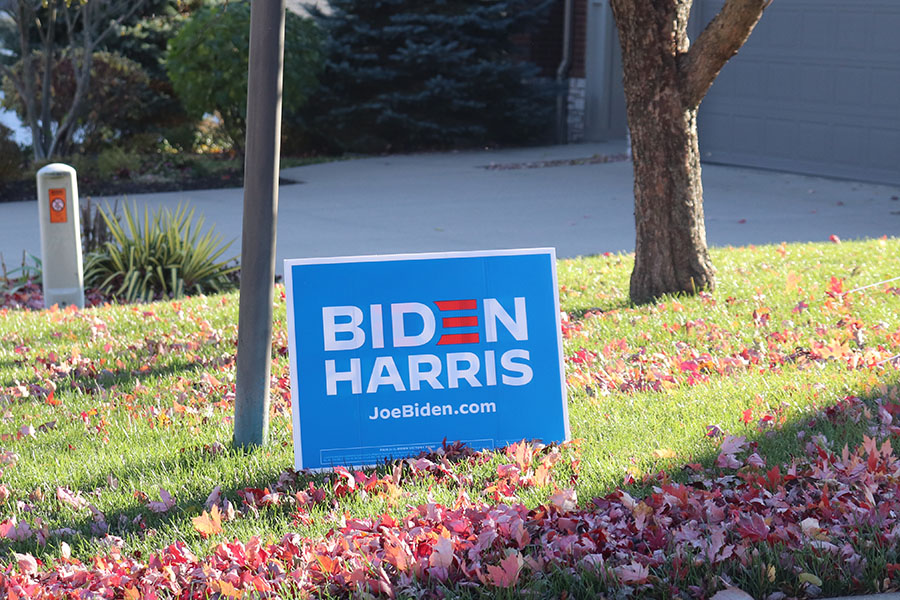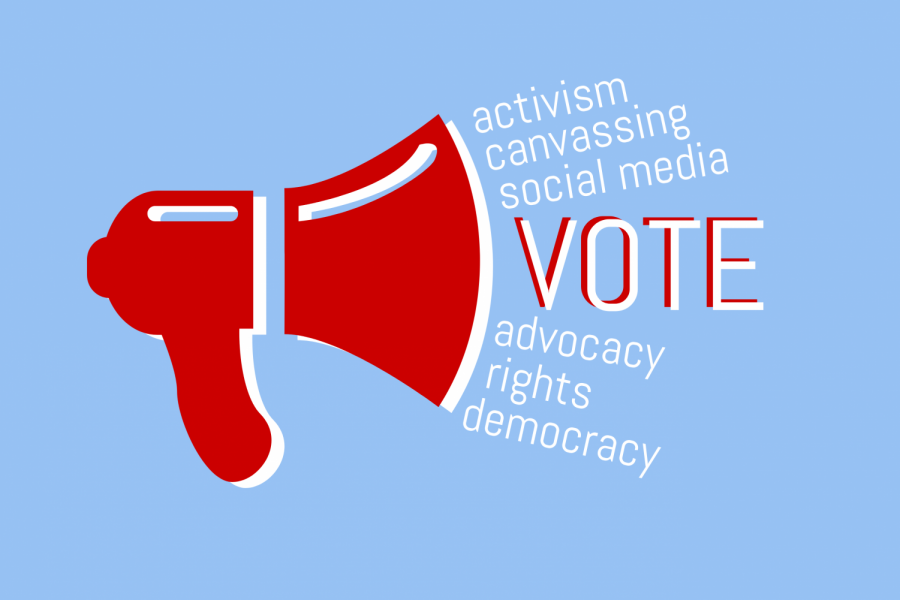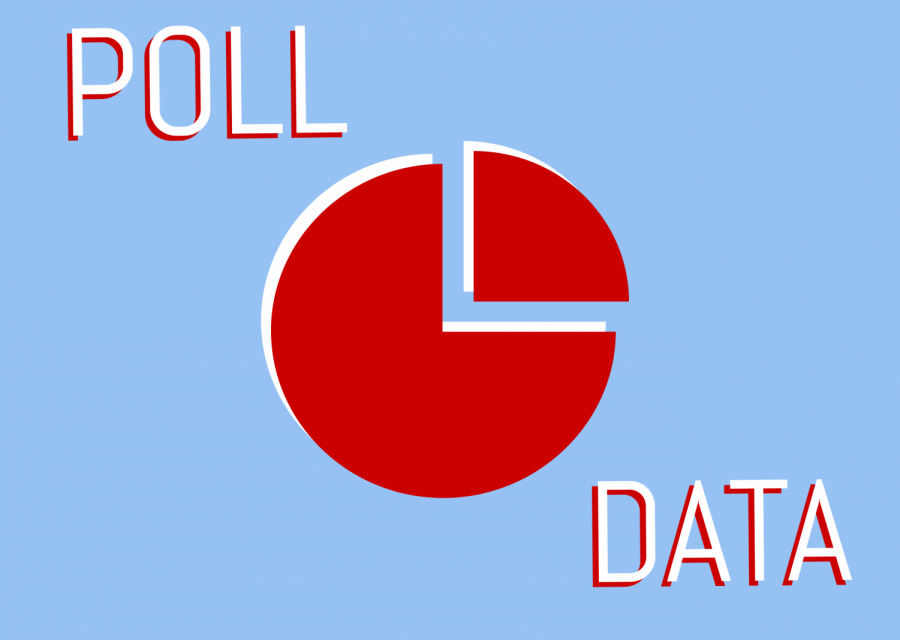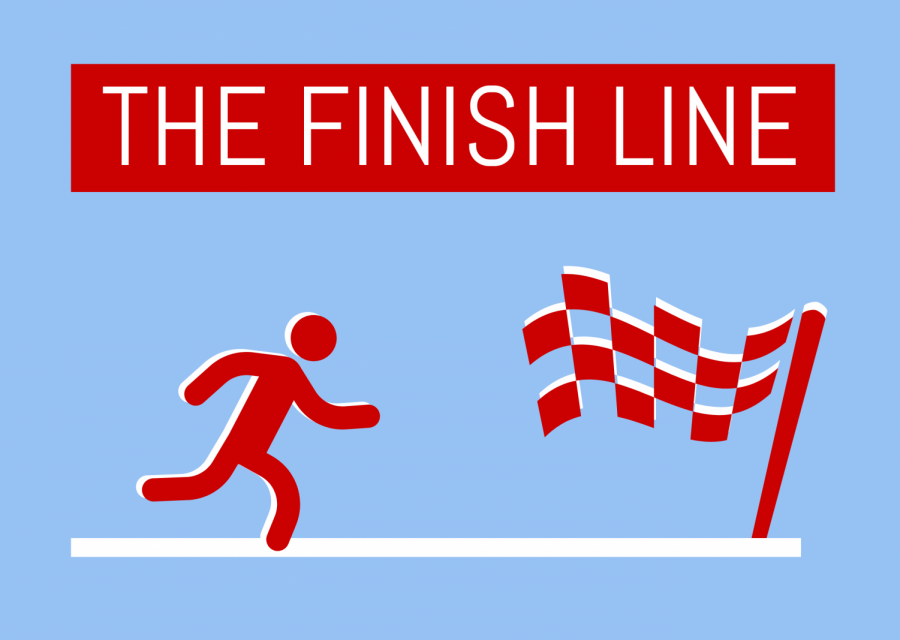Your donation will support the student journalists of West High School. Your contribution will allow us to purchase Scholarship Yearbooks, newsroom equipment and cover our annual website hosting costs.
Power to the people: 2020 election preview
Ahead of election day, WSS analyzed recent polling data and spoke to students, both eligible and non-eligible, about why they felt voting in this year’s election was crucial.
November 3, 2020
After what feels like years of campaigning, the 2020 presidential election is coming to a close. More than 30 candidates, 12 debates and countless rallies have boiled down to two months of in-person and mail-in voting — and the results are almost in.
The COVID-19 pandemic has made this election cycle particularly interesting, with the coronavirus affecting everything from debate style to how candidates are working to get out the vote in a year that makes a visit to the polls a potentially dangerous feat.
As the pandemic forced canvassing and advocacy efforts largely to online platforms, West students have been active in voicing their support for candidates and encouraging their peers to vote via social media. For students who are of age, this activism is particularly meaningful.
In short, 2020 has been an unconventional year, and thus far the election has been no exception. In our pre-election overview, WSS will break down the outlook of the presidential election and explore how student voters are exercising their rights this November.
New voices
This year’s election marks the first that millennial and Generation Z voters will equal the number of baby boomer and older generation voters. With young people playing such an integral role in the outcome of this year’s election, West students have not held back when it comes to fighting for the issues and candidates that are important to them.
“I’ve been so proud to see that many of my fellow classmates have been extremely active in advocating for voting and social justice issues,” said Grace Hinrichs ’21. “It makes me hopeful that our generation will be the generation to switch up the narrative on youth voters.”
Hinrichs’ birthday falls just before election day, making her eligible to vote on Nov. 3. Though many seniors will have to wait four more years to cast their first votes, Hinrichs is hopeful that youth voters at West and across the country can make a difference.
“I believe that if we show up and use our voice, we will make a big change which is desperately needed right now,” Hinirchs said. “There is so much at stake.”
Like 30% percent of West students surveyed, Hinrichs values equality and human rights as an important factor in this year’s presidential race.
“We have a long way to go before we reach total equality, and in order to get there we need an administration in office that educates and enforces equal rights for all people,” Hinrichs said.
The importance of one’s vote can make choosing a candidate a daunting decision. For Hinrichs, the potential for change on election day outweighs the anxieties.
“I feel so blessed that my 18th birthday fell in the month of a very important election and I was able to do my part to evoke change,” Hinrichs said. “I’m anxious to see the outcome of this election but I can see a faint light at the end of the dark tunnel these past four years have been.”
Claudé Clark ’21 also voted in this year’s election. In other years, Clark would have preferred to vote for a third party candidate, but felt as though voting for a Democratic candidate would be the most impactful choice in 2020.
“This year is very unique in that I felt like I had to vote for a Democrat,” Clark said. “This year, this election is very important and it’s going to affect a lot of my life and the coming years. I felt like … if we really want Trump out of office, if we really want to get the U.S. to be in a better place for all types of people, then we need to vote.
Clark cited the removal of President Donald Trump from office as a major motivation for voting in this year’s election.
“I want Trump out because I want a president that doesn’t hate me because of my skin tone,” Clark said. “There’s a lot of other stuff that I didn’t think he was doing very well about, like race and sexuality. Those main factors were what made me choose my candidate.”
Kathleen Washington ’21 is not old enough to vote in the election. In spite of this, she echoes Clark’s sentiment, arguing that this year’s election transcends politics.
“In my opinion, this election is not about choosing a candidate based on their political views,” she said. “This election is about preserving democracy.”
To many students, this year’s election feels especially weighty because of the drastically different belief systems of the two candidates. Clark feels as though if youth voters see policy they don’t agree with, it’s up to them to lead the change.
“If you don’t like what you’re seeing in this place and in this world, and you don’t like what’s being said on the news and being directed towards you, and you don’t do anything to vote or get into it, then that’s kind of your fault,” Clark said. “A lot of people don’t realize their vote counts … people need to vote and that’s how this country runs and works”
A look at the data
As evinced by the 2016 presidential race, poll data isn’t always indicative of election results. That being said, looking at the numbers can provide a picture of which candidates are leading in different parts of the country, and how the Electoral College may play out.
Nationally, poll averages show former Vice President Joe Biden as leading the popular vote and the electoral college.
According to FiveThirtyEight’s Nov. 2 polling averages, Biden is favored to win the popular vote by 9.4 percentage points. FiveThirtyEight’s election forecast also predicts Biden winning in the Electoral College with an estimated 319 votes.
Comparatively, Real Clear Politics’ polling average shows Biden ahead by 7.2 percentage points. Looking more specifically at the Electoral College, the Financial Times shows Biden winning 252 electoral votes and President Donald Trump winning 125, using polling data from Real Clear Politics.
The race in Iowa is predicted to be much closer. A Nov. 2 Public Policy Poll shows Joe Biden ahead by just one point. Comparatively, an Oct. 31 poll from the Des Moines Register and Mediacom shows Donald Trump leading by seven points.
In the 2016 presidential race, Trump won against Hillary Clinton by 9.4 percentage points, with 32 counties swinging from democratic to republican. Prior to 2016, Iowa had swung democratic for six out of seven elections between 1992 and 2012. If Joe Biden were to win Iowa this year, he would return Iowa to its former pattern of voting primarily blue.
Similar to statewide polls, Trump came out on top in the Iowa Youth Straw Poll, with 52.8 percent of votes versus Biden’s 34.1 percent. Musical artist and 2020 presidential candidate Kanye West walked away with a notable 9 percent of youth votes.
The endgame
With the unconventional voting formats adopted during this year’s presidential election, it’s reasonable to expect delays in the results of the race, with a very real possibility that a winner will not be determined on the night of Nov. 3.
These delays are primarily due to the abundance of mail-in ballots, which take longer to process through polling places. There are also discrepancies in the way that individual states process different types of ballots, meaning that the results of some states will be available sooner than others.
Iowa is expected to release a verdict by election night, according to Secretary of State Paul Pate, though these results may not be finalized until days following.
In other, more contentious states with a high volume of absentee ballots, the chances of election night results are slimmer. One of these states is Pennsylvania, a state that many political analysts believe could be a major determinant in this year’s race. In Pennsylvania, state law forbids election officials from opening and counting mail-in ballots until election night. With mail-in ballots comprising one third of Pennsylvania’s total vote count, it’s likely that the outcome seen on election night will vary from the actual results of the state’s election.
The time at which there’ll be a clear frontrunner will depend on how fast ballots are counted in battleground states like Pennsylvania. These states include: Arizona, Georgia, Florida, Iowa, Michigan, Minnesota, Nevada, New Hampshire, North Carolina, Ohio, Pennsylvania, Texas, and Wisconsin. Here is a summary of how fast results can be expected from each state, and who is the current frontrunner.
Arizona
- Who won in 2016: Donald Trump
- Who’s leading in the polls: Joe Biden
- When can we expect results: Arizona began processing ballots two weeks prior to election day, and results are expected within a day of Nov. 3
Georgia
- Who won in 2016: Donald Trump
- Who’s leading in the polls: The candidates are neck and neck, with Biden barely leading in FiveThirtyEight’s poll average.
- When can we expect results: Georgia began processing ballots two weeks and one day prior to election day. Results are expected late Tuesday or early Wednesday.
Florida:
- Who won in 2016: Donald Trump
- Who’s leading in the polls: Joe Biden
- When can we expect results: Florida’s ballot processing began Sept. 24, but results are expected to trickle in slowly until Wednesday.
Iowa:
- Who won in 2016: Donald Trump
- Who’s leading in the polls: The candidates are neck and neck, with Trump barely leading in FiveThirtyEight’s poll average.
- When can we expect results: An unofficial tally is expected Tuesday night.
Michigan:
- Who won in 2016: Donald Trump
- Who’s leading in the polls: Joe Biden
- When can we expect results: Official results are expected by Friday.
Minnesota:
- Who won in 2016: Hillary Clinton
- Who’s leading in the polls: Joe Biden
- When can we expect results: Unofficial results are expected Tuesday night.
Nevada:
- Who won in 2016: Hillary Clinton
- Who’s leading in the polls: Joe Biden
- When can we expect results: Final results not expected until days following the election.
New Hampshire:
- Who won in 2016: Hillary Clinton
- Who’s leading in the polls: Joe Biden
- When can we expect results: Results expected on election night.
North Carolina:
- Who won in 2016: Donald Trump
- Who’s leading in the polls: Joe Biden, by only 1.8 percentage points in FiveThirtyEight’s polling average.
- When can we expect results: Results expected on election night.
Ohio:
- Who won in 2016: Donald Trump
- Who’s leading in the polls: The candidates are neck and neck with Trump leading by less than a percentage point in FiveThirtyEight’s polling average.
- When can we expect results: Results expected Tuesday evening into Wednesday morning.
Pennsylvania:
- Who won in 2016: Donald Trump
- Who’s leading in the polls: Joe Biden
- When can we expect results: It is unclear when to expect Pennsylvania results, as mail-in ballots cannot be counted until Tuesday in most counties, with some counties waiting until as late as Wednesday to begin their count.
Texas:
- Who won in 2016: Donald Trump
- Who’s leading in the polls: Trump is leading in FiveThirtyEight’s poll average by just over a point.
- When can we expect results: Results are expected relatively early on election night, unless the race is tight.
Wisconsin:
- Who won in 2016: Donald Trump
- Who’s leading in the polls: Joe Biden
- When can we expect results: Unofficial results expected on election night with official results expected Wednesday.





